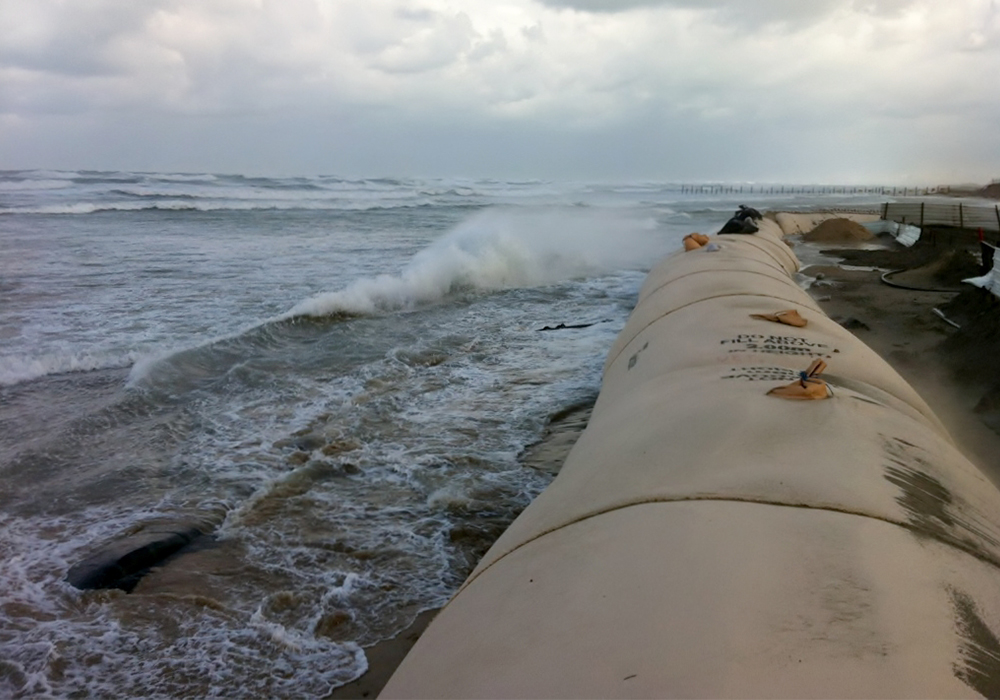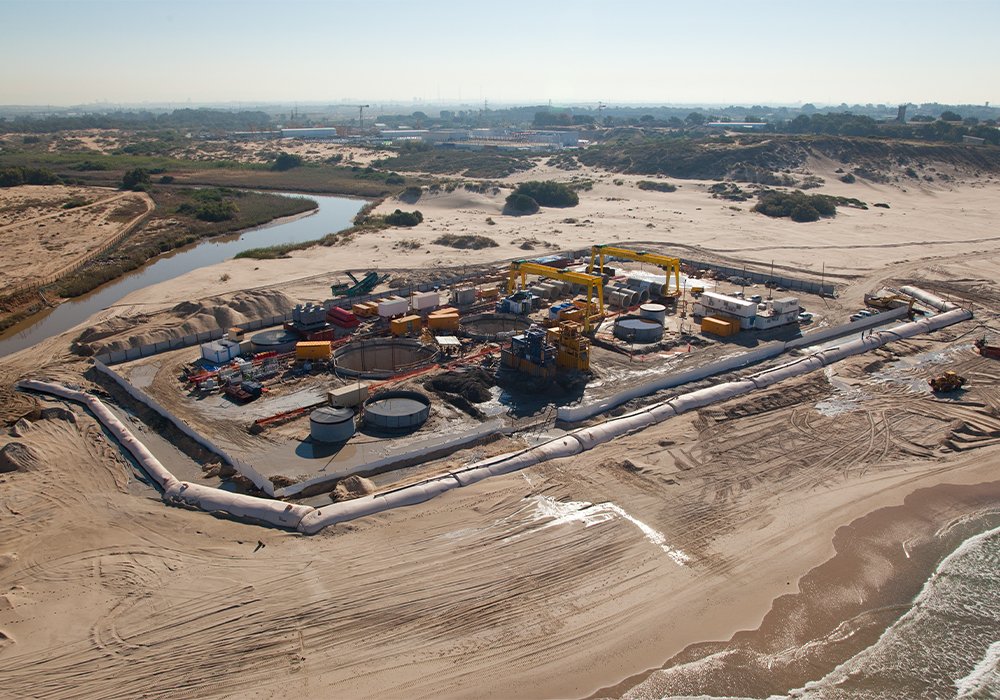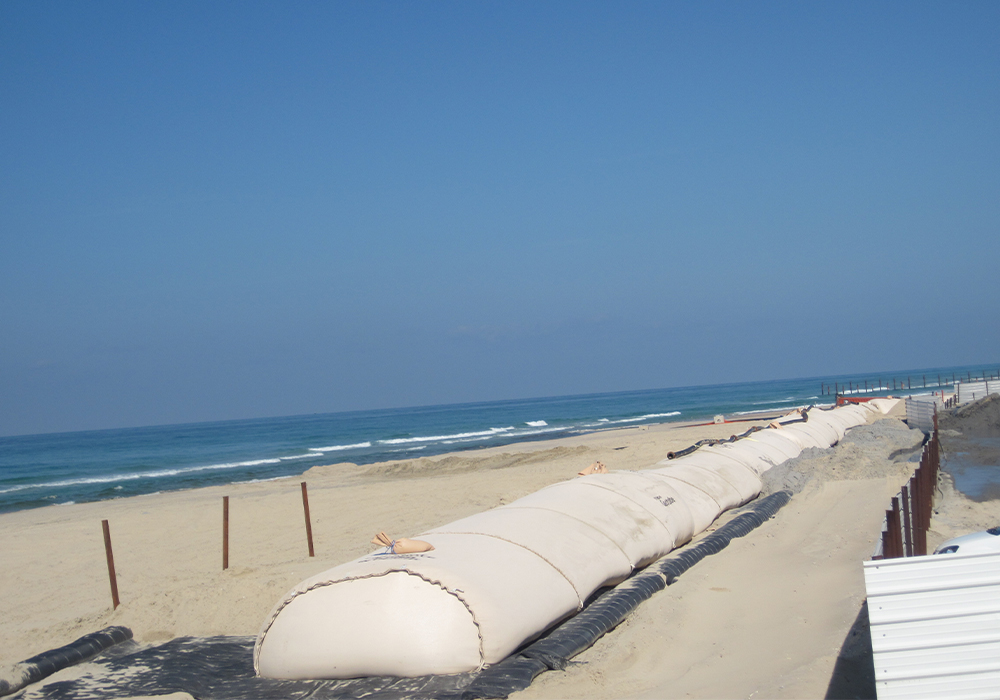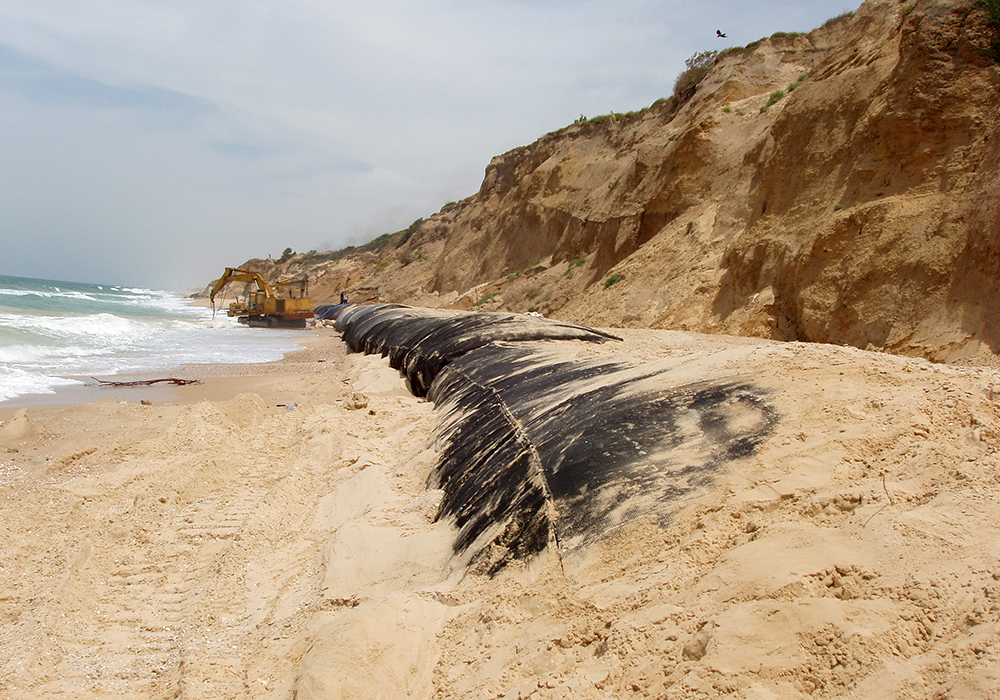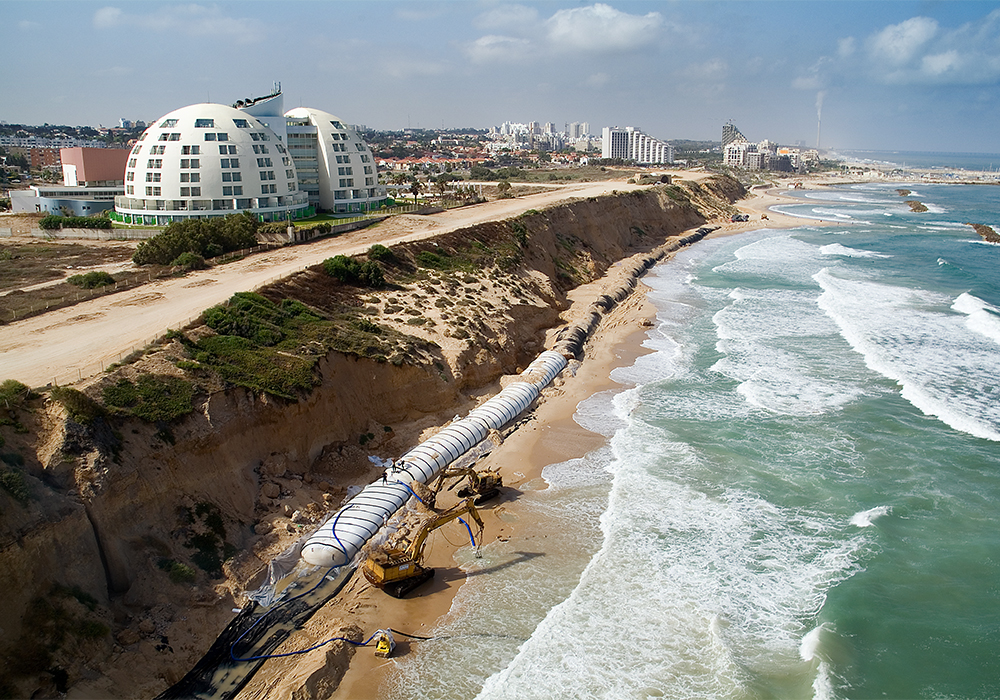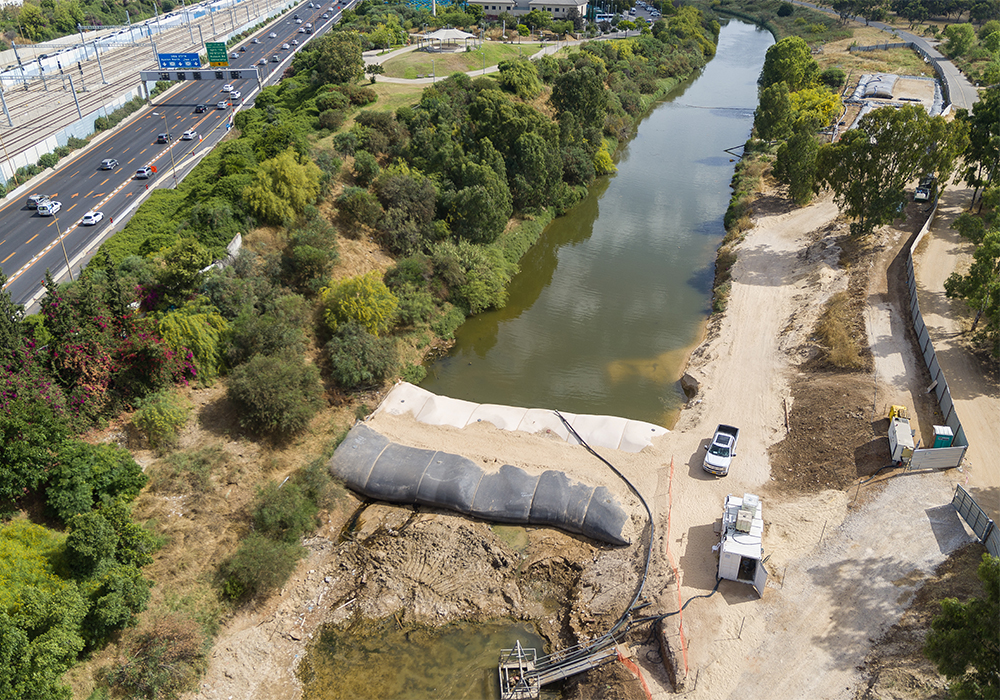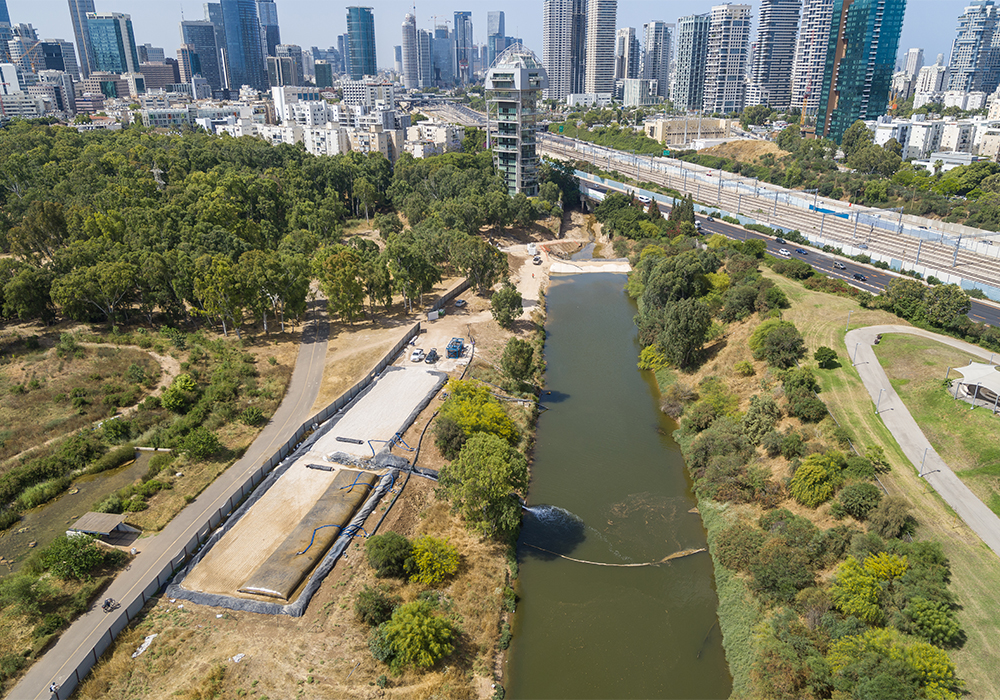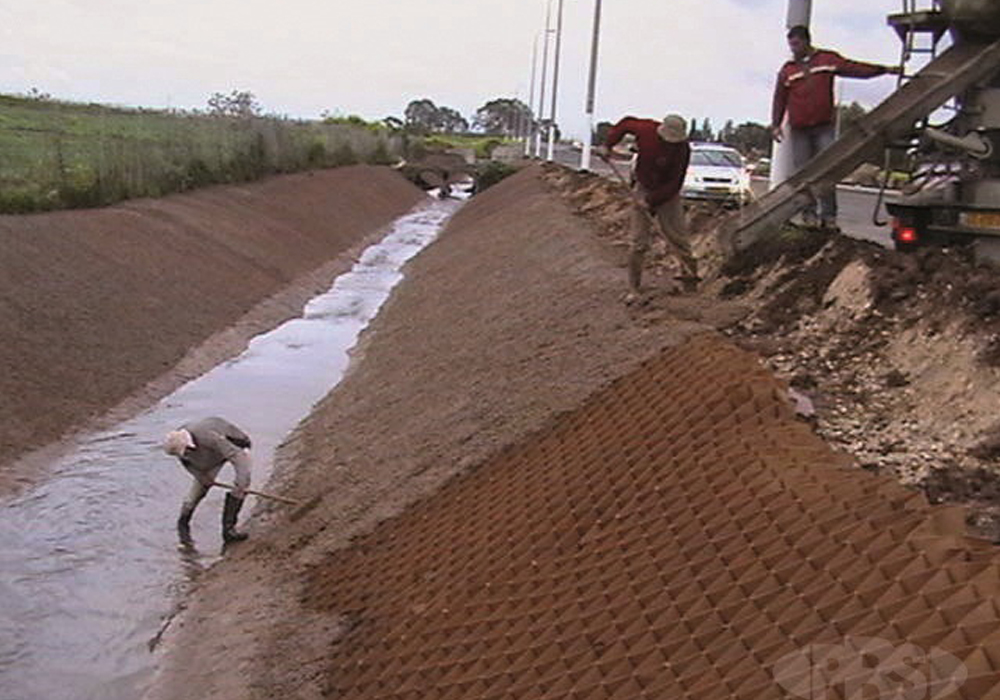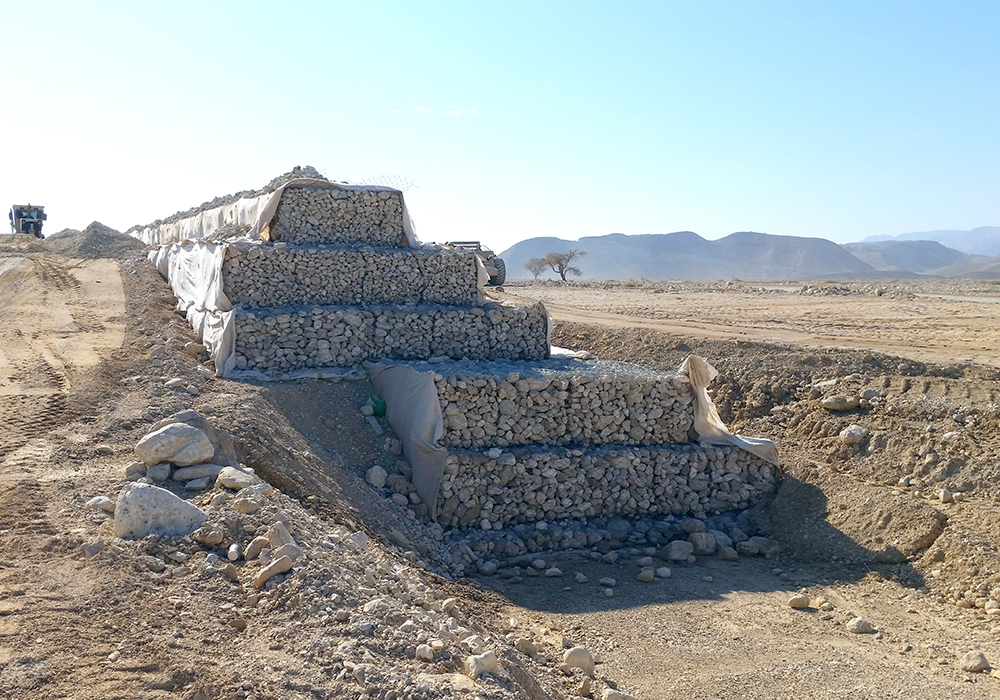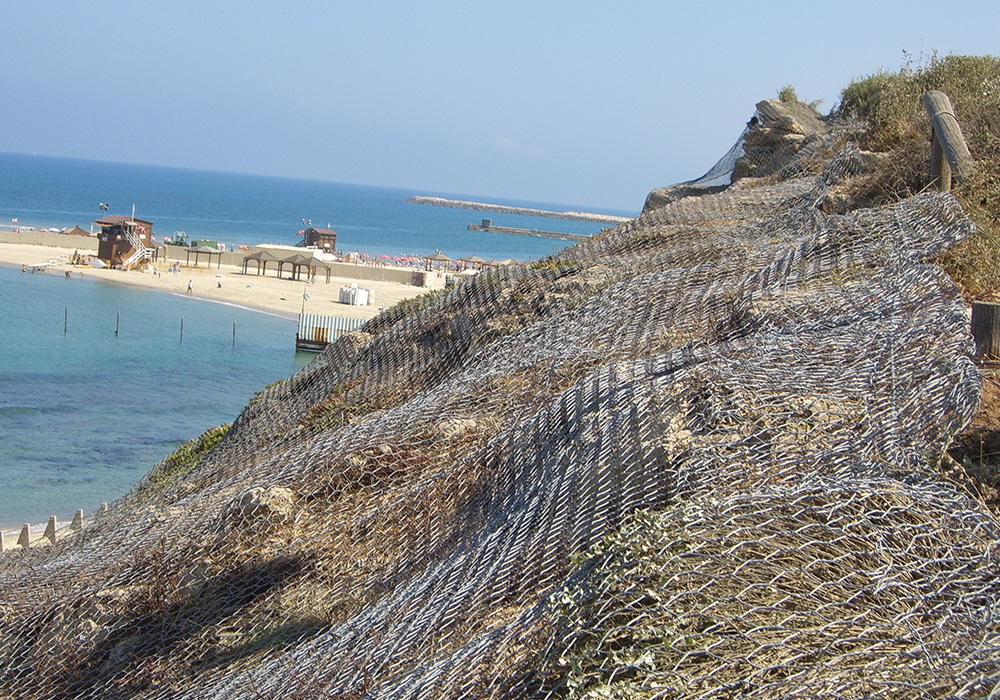Coastal cliffs and shores protection using Geotube
Development activities in the vicinity of the shoreline, alongside erosion, marine storms and high waves, may lead to destructive effects on buildings, installations and beaches in close vicinity, even causing their collapse.
Admir employs geotube (Geotube) technology to protect sites at the shoreline and near the water, by erecting a barrier built of geotextile containers (Geotube). The geotubes separate the sand accumulated within them from the water which is filtered out.
Admir designs the placement of geotubes so as to avoid harming facilities on the shore line, by placing them one after another, creating a wall near the location to be protected. The geotube (Geotube), made of woven geotextile sheets, facilitates employing the excellent hydraulic and mechanical attributes of the sheets to cope with complex challenges posed by marine work, such as erosion, mechanical resistance and resistance to UV radiation.
Installation of Geotube is performed by pumping the water/sand mixture into the sewn container.
The geotextile sheet acts as a filter separating the water flowing through it from the soil/sand particles which remain within it.

